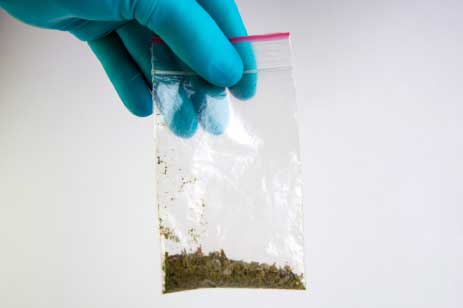What is Synthetic Marijuana and Why You Should Avoid It
By CLOVR Cannabis
May 14 2020
Smoke shops, gas stations, head shops, and countless websites sell synthetic marijuana. This cannabis impostor is prevalent in states where marijuana is still completely illegal. The problem is that young people are using synthetic marijuana because they will be tested for drugs for a job or other reason. At first glance, this may seem like a legal and safe substitute for real marijuana, but it is anything but safe. Before we get into why synthetic cannabis is dangerous, it’s important to differentiate synthetic cannabis from the drug Marinol. Marinol is an FDA approved pharmaceutical drug intended to treat symptoms such as nausea and lack of appetite. It is often prescribed to patients as an alternative to cannabis. The FDA has not approved products such as K2 and Spice because they have a list of dangerous and potentially deadly side effects.
Synthetic marijuana consists of “plant material” that has had various chemicals either sprayed or dried onto it. It has many different names, but is most commonly referred to as Fake Weed, Spice, or K2. It is often labeled as “natural” because of the ambiguous plant material that hosts the psychoactive chemical compounds. Unlike products that are labeled as organic, there is no standard that constitutes a natural product.  The chemicals can’t be listed because they change from company to company, and year to year. The chemicals that are used are similar to cannabinoids in how they bind to receptors. This however, is where the similarities end. Products like Spice and K2 were created to mimic the effects of marijuana, but the effects on the human body and chemical structures are nothing like real and naturally occurring cannabinoids found in the cannabis plant.
The chemicals can’t be listed because they change from company to company, and year to year. The chemicals that are used are similar to cannabinoids in how they bind to receptors. This however, is where the similarities end. Products like Spice and K2 were created to mimic the effects of marijuana, but the effects on the human body and chemical structures are nothing like real and naturally occurring cannabinoids found in the cannabis plant.
The various synthetic chemicals that are used are called cannabinoids because they attach to our CB1 receptors. These chemicals bind much stronger to the receptors than legitimate cannabinoids. The effects are vastly different and can be anywhere from 2-100 times more physical and psychoactive depending on the batch. This drastic variance could be because of the non regulated chemicals used and the inconsistent dosing on the plant material. It is often sprayed on which could lead to certain spots getting heavier doses of chemicals. There is no data that speaks to long term use of these different chemical mixtures. The effects seem to vary depending on the individual consumer. Some people may feel uplifted while others feel tired. The target effects are inconsistent at best, and the side effects can be deadly.
These side effects depend on the individual consuming the synthetic cannabis, the chemicals used, and the strength of the batch. In 2016, 33 people were hospitalized for K2 overdoses in Brooklyn all within a 12 hour period. Multiple people collapsed in the middle of the sidewalk in the same area. A witness described it as “being like a scene out of a zombie movie”. Another man in Shelton, Washington fell into a three day coma and nearly died after only taking one hit of Spice. He claims that he took one puff, blacked out, and woke up in the hospital. There are tens of thousands of people hospitalized each year due to synthetic marijuana and 78% of those people are young adults and adolescents. The increasing hospitalizations and deaths related to these products are pushing lawmakers to make synthetic cannabis illegal.
Synthetic marijuana is clearly dangerous yet it’s still readily available on the shelves of tobacco shops, head shops, and gas stations. The Substance Analogue Enforcement Act of 1986 allows lawmakers to ban any chemical compound that is similar to a schedule I or II substance. Since synthetic marijuana is an analogue of plant based marijuana it falls under this enforcement act, but there are some problems. The DEA has actually been banning the chemicals that are in synthetic cannabis. The problem that they are facing is that when the FDA bans a product, another one that is legal with a different name and structure takes its place. According to this NPR article, it’s a bit of a “cat and mouse game”. They say that it isn’t the chemicals themselves that are dangerous, but the mixture of chemicals that make up the synthetic cannabinoids that can be deadly. It doesn’t help that it can sometimes take up to a year to complete the process of identifying these chemicals and banning them.
Another factor keeping these products on the shelves is a loophole in labeling. The FDA regulates products for consumption. Synthetic marijuana companies avoid FDA regulation by a label on the packaging that says “not for human consumption”. This shields these companies from possible legal repercussions as well since the people who overdosed consumed something that had a label stating not to. An all out ban is necessary to get these products off of the shelves rather than the specific chemicals that they contain.
Until lawmakers are able to ban products like these as a whole, the chemical compounds in synthetic marijuana will continue to change as will the effects that they have on the human body. At this point, education is the best resource we have for keeping our communities safe.